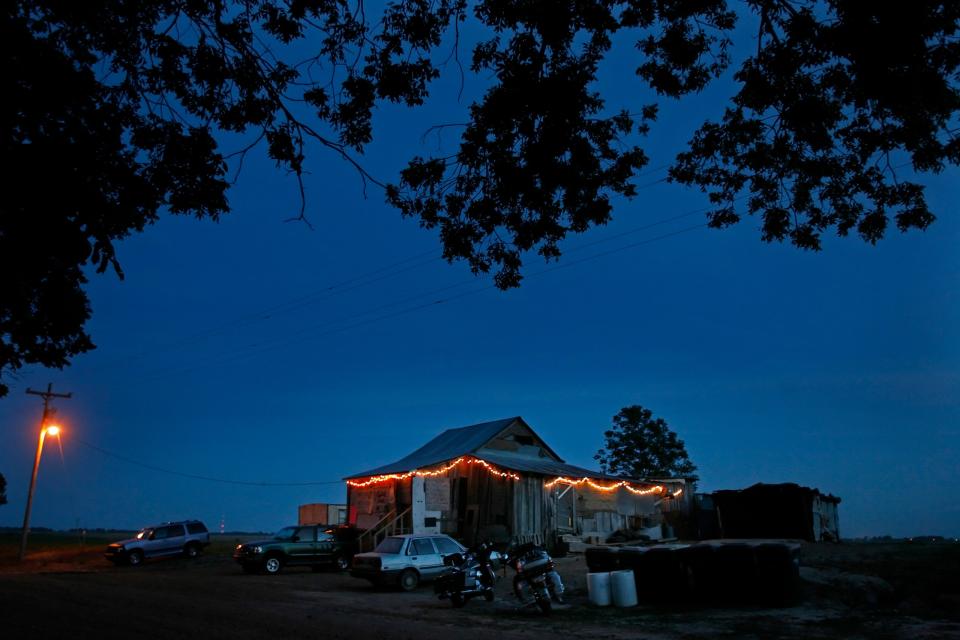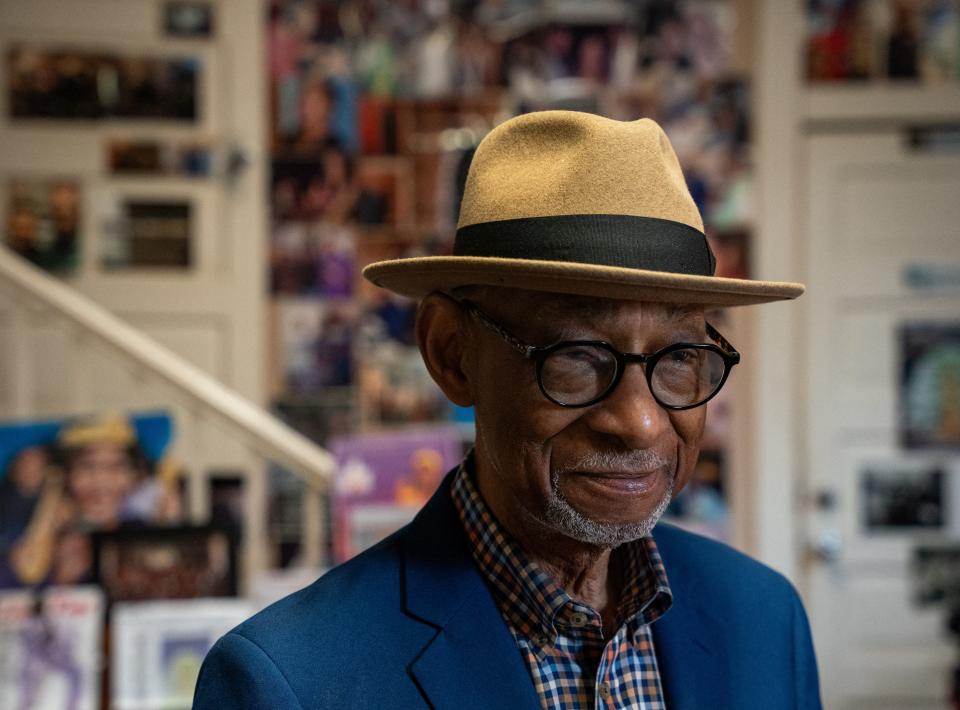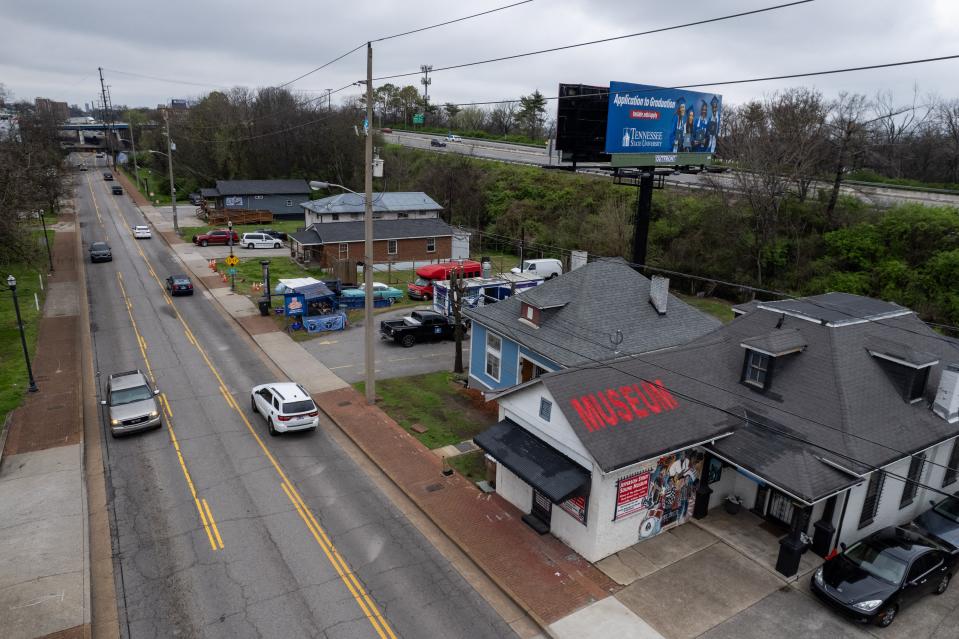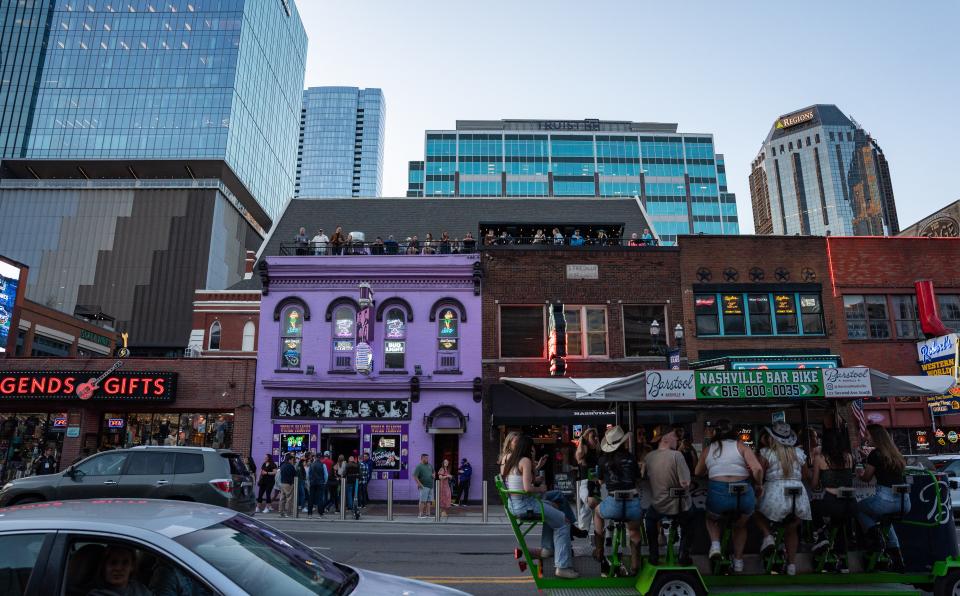After Beyoncé’s Cowboy Carter Ignited a Conversation Around Race and Genre, Looking Back at the Spaces Where Black Country Music Thrived

- Oops!Something went wrong.Please try again later.
- Oops!Something went wrong.Please try again later.
- Oops!Something went wrong.Please try again later.
Photo: Blair Caldwell / Copyright Parkwood Entertainment LLC
No other song on Cowboy Carter, Beyoncé’s latest country music album, transports me to another place and time like “Ya Ya.”
The rhythmic snapping, clapping, boot stomping, and call and response from the theoretical ladies and fellas in the audience evokes a period in Black American history (particularly in the Deep South) that I can visualize in my mind, but as a child of the post–Jim Crow era, have never experienced myself. On one hand, I’m grateful for the sacrifices of my parents and grandparents that allowed certain freedoms and safety they never had, but on another, I’ve wondered what it would be like to spend most of my time in spaces that centered Blackness.
It’s the scene in What’s Love Got to Do with It, the Tina Turner biopic, where Angela Bassett as Anna Mae Bullock takes the stage for the first time at a St. Louis nightclub, or in the 2023 version of The Color Purple when Taraji P. Henson tears down the house in a southern juke joint as dynamo singer Shug Avery. And though these moments take place in a legally segregated America when Black Americans were denied necessary civil rights, it’s clear that the people dancing, drinking, and singing are in their own safe space. A space of unadulterated Black joy.
The Chitlin’ Circuit
My mother is from a tiny town in southwest Louisiana and grew up during the height of segregation. She attended schools for “colored” children, her family mostly patronized Black-owned businesses, and even to this day her town has an invisible yet distinct line that divides it into the Black and white sides of town. I’ll never forget when she said to me, as we strolled around the downtown area (and I use that word very lightly), “Besides access to education, integration was the worst thing to happen to Black people.” My head snapped up and I looked at her like she was crazy.
Then she pointed out the buildings around town that were former Black-owned barbershops, grocery stores, boutiques, and bars, and I started to see her point: Although they weren’t allowed to patronize white-owned establishments, there was a time when the Black community was its own self-sustaining economy. Later, we pulled out 1950s snapshots of my grandparents dressed to the nines heading to Ball’s Auditorium in Lake Charles, Louisiana, where they saw Ray Charles, B.B. King, and other famous Black musicians performing on what was known as the Chitlin’ Circuit: an informal network of Black-centered venues where musicians like Jimi Hendrix, Aretha Franklin, and Little Richard honed their crafts in front of Black audiences when they weren’t allowed in white-owned establishments. The Chitlin’ Circuit (which also gets a Beyoncé shout out in “Ya Ya”) represented yet another time when Black Americans lived in the shadow of white America, carving out physical spaces for themselves to celebrate their talents with a shared sense of dignity.

JERRY HOLT ¥jgholt@startribune.com 6/21/2006 ÒPOÓ MonkeyÕs Lounge Merigold Mississippi---Dusk and dancers descended on PoÕ MonkeyÕs blues juke joint in Merigold Mississippi. --
Juke joints—informal dive bars usually with live music scattered through the South—emerged as safe spaces for Black people to dance, drink, and draw deeper into their humanity during slavery and reconstruction, but they exploded in popularity from the 1920s until the 1970s. There was Marion’s Place Cafe in Belle Glade, Florida; Po’Monkey’s in Merigold, Mississippi; and Teddy’s Juke Joint in Zachary, Louisiana—a rare example of one of these establishments that is still operating today. Sometimes they were ramshackle shacks along a rural back road in Alabama; other times there were tiny spaces down alleys in the heart of Nashville.

ENTERTAINMENT-US-NASHVILLE-GENTRIFICATION
“Every Friday night my grandmother would starch and iron my granddaddy’s white shirt so hard it looked like it could stand on its own!” Lorenzo Washington, founder of the Jefferson Street Sound Museum in Nashville, tells AD with a laugh. “He’d have on his black striped pants and his black Stetson hat that we’d brush down to get it ready for him to go out to the juke joint. When he left we’d follow to peep in the windows to watch the older folks having a ball.”
A lifelong Nashville resident now in his 80s, Washington vividly remembers when Jefferson Street, the main thoroughfare of Nashville’s Black community, pulsed with shops, restaurants, juke joints, and nightclubs. When he was old enough to patronize the establishments on his own, Washington went to shows at Club Del Morocco, Club Baron, and Club Stealaway, all spaces that no longer exist in their original form. Occasionally, after the club, it was time to head to a juke joint where a hot plate of soul food awaited. “They always had good food in juke joints and great stories,” says Washington. “It was a lot of laughter, loud talking, and just about everybody that came in there knew each other. It was a place where it felt like you belonged.”

ENTERTAINMENT-US-NASHVILLE-GENTRIFICATION
Although the music scene was electric on Jefferson Street, it was largely ignored by the predominantly white country music genre that Music City is known for. Racist “urban renewal” policies and the construction of Interstate 40 in the late 1960s decimated Jefferson Street, but Washington is determined to ensure its legacy lives on. He converted his home into the Jefferson Street Sound Museum in 2011, complete with a music production studio, rehearsal hall, memorabilia room, and photos of both local and internationally known musicians.
Juke joints give rise to honky tonks
Sadly, you could probably count the number of original remaining juke joints in the United States on one hand. Like many rural Black-owned establishments, they fell victim to integration and were eventually abandoned when Black Americans could legally patronize whatever bars they wanted. (Though legally did not always mean safely.) Urban renewal policies and gentrification during the 1950s and ’60s also razed predominantly Black neighborhoods, oftentimes destroying juke joints in larger cities like Memphis and Nashville.
Today, most people associate juke joints with the blues and honky tonks with country music, but the reality is that there isn’t much of a difference between the two physical spaces. Both are known for nearly the same things: live music (oftentimes these places are where big-name artists get their start), stick-to-your-ribs food, dancing, drinking, and a vibrant history. One important distinction, however, is the audience. When I ask Washington for the difference between juke joints and honky tonks, his answer is simple: “The color of the people.”

US-ENTERTAINMENT-MUSIC-COUNTRY-RACISM-BEYONCE
Nashville being branded as Music City yet being primarily associated with a specific type of music (read: country music sung by white musicians) is no accident. In the early 1920s, record companies and radio stations, particularly in Nashville, marketed genres of music by race, usually classifying gospel and blues by Black singers as “race records,” while “hillbilly music,” later called “country music,” was marketed to white audiences. The hillbilly music sounded a lot like the blues and gospel music that came first, especially the melodic sounds of the Fisk Jubilee Singers, a vocal group from Nashville’s Fisk University composed entirely of freed black slaves who began performing globally in the 1870s.
In a reflection of the times, the music and its marketing remained divided by race no matter the melodic and thematic similarities. There was a similar divide when it came to the physical spaces where people enjoyed this music. I find it interesting that unlike the juke joint, the honky tonk survives today, in the form of country-music-branded bars—some even owned by celebrities—dotted across Nashville. Today, country music is associated with honky tonks and whiteness—I wonder what the reaction would be to a new Nashville juke joint dedicated to its original purpose: a celebration of Black joy through music, laughter, cold drinks, and hot food.
This brings me back to Beyoncé. From the moment she announced Cowboy Carter, there was vitriol and backlash from white country music fans who claim she’s not an authentic country music artist. And though she spells out her southern roots in the track “American Requiem” (“The grandbaby of a moonshine man / Gadsden, Alabama / Got folk down Gavelston, rooted in Louisiana / They used to say I spoke too country / Then the rejection came, said I wasn’t country enough…But if that ain’t country, tell me, what is?”), maybe what’s causing the most discomfort is her full-throated reclamation of country music as Black music. As a southern-raised Black woman myself, I’ll be forever grateful that this body of work is reminding everyone who listens where country music truly came from.
Originally Appeared on Architectural Digest
More Great Celebrity Style Stories From AD
Inside Benny Blanco’s Eclectic LA Home, Which Doubles as Hollywood’s Favorite Hangout
Windsor Castle: Inside the 1,000-Year-Old History of the Royal Residence
20 Years After Mean Girls, Regina George’s Bedroom Still Reigns Supreme
Inside Bad Bunny’s Houses: Tour Where the Latin Superstar Lives
Not a subscriber? Join AD for print and digital access now.
Browse the AD PRO Directory to find an AD-approved design expert for your next project.

